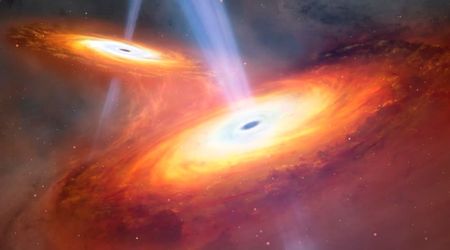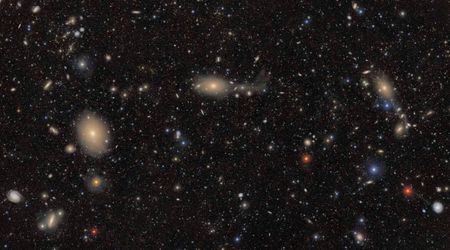SpaceX Falcon 9 rocket launches 26 more Starlink satellites from Vandenberg

SpaceX successfully launched another batch of Starlink satellites from Vandenberg Space Force Base in California on May 12. Starlink Group 15-4 mission deployed 26 upgraded Starlink V2 mini satellites into low Earth orbit. The satellites were launched aboard the Falcon 9 rocket from Space Launch Complex 4 East at 6:15 p.m. PDT (9:15 p.m. EDT, 0115 UTC), as reported by Spaceflight Now.
Watch Falcon 9 launch 26 @Starlink satellites to orbit from California https://t.co/wcONO4iDLo
— SpaceX (@SpaceX) May 13, 2025
This mission used Falcon 9 first stage booster 1088, which has now completed 6 flights, including the launch of NASA’s SPHEREx observatory, the Transporter-12 smallsat rideshare, and two National Reconnaissance Office missions. Approximately 8 minutes after the launch, B1088 made a successful landing on the droneship ‘Of Course I Still Love You’ in the Pacific Ocean. This marks another step in SpaceX's ongoing efforts to expand its Starlink satellite constellation, aiming to provide global internet coverage.

This launch represented SpaceX's 18th launch from California this year. Authorization for up to 50 annual launches from Pad 4 East has been secured from the Federal Aviation Administration and the Department of the Air Force, averaging one SpaceX launch every 7.3 days from California in 2025. When combined with their two launch pads and droneships on the East Coast of Florida, SpaceX is achieving an even more frequent launch cadence of approximately once every 3.5 days.

A Falcon 9 mission, on January 24, 2021, broke the record for the most satellites deployed in a single launch by deploying 143 satellites, demonstrating its capability for high quantity deployment.
With 7200 operational satellites already orbiting in LEO (low Earth orbit), SpaceX is preparing to deploy additional satellites. Each of these satellites is the size of a large table (if we don't count the broad solar arrays). They operate in orbital shells that give overlapping coverage across the Earth. Starlink network lets people access fast internet, as long as they have the Starlink receiver pointing towards the sky to catch the signals from these satellites.

SpaceX has also launched 28 Starlink satellites to low Earth orbit aboard a Falcon 9 rocket from Launch Complex 39A (LC-39A) at NASA’s Kennedy Space Center in Florida on May 13. The first stage booster, making its 28th flight, returned to Earth for a landing on the droneship 'Just Read the Instructions' in the Atlantic Ocean after separating from the upper stage. This booster has previously supported multiple missions, including CRS-22, Crew-3, Turksat 5B, Crew-4, CRS-25, Eutelsat HOTBIRD 13G, O3B mPOWER-A, PSN SATRIA, Telkomsat Merah Putih 2, Galileo L13, Koreasat-6A, and 16 Starlink missions, as per Space.com.
Designed and manufactured by SpaceX, Falcon 9 is a reusable, two-stage rocket engineered for the reliable and safe transport of both people and payloads to Earth orbit and beyond. As the world's first orbital-class reusable rocket, Falcon 9 enables SpaceX to refly its most costly components, significantly reducing the expense of accessing space. As of May 13, 2025, Falcon 9 has completed 472 missions, achieved 427 total landings, and conducted 398 total reflights.










